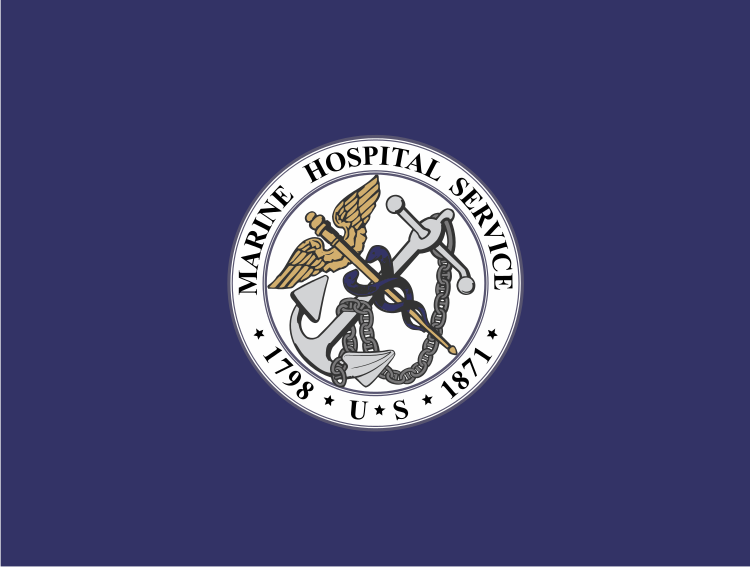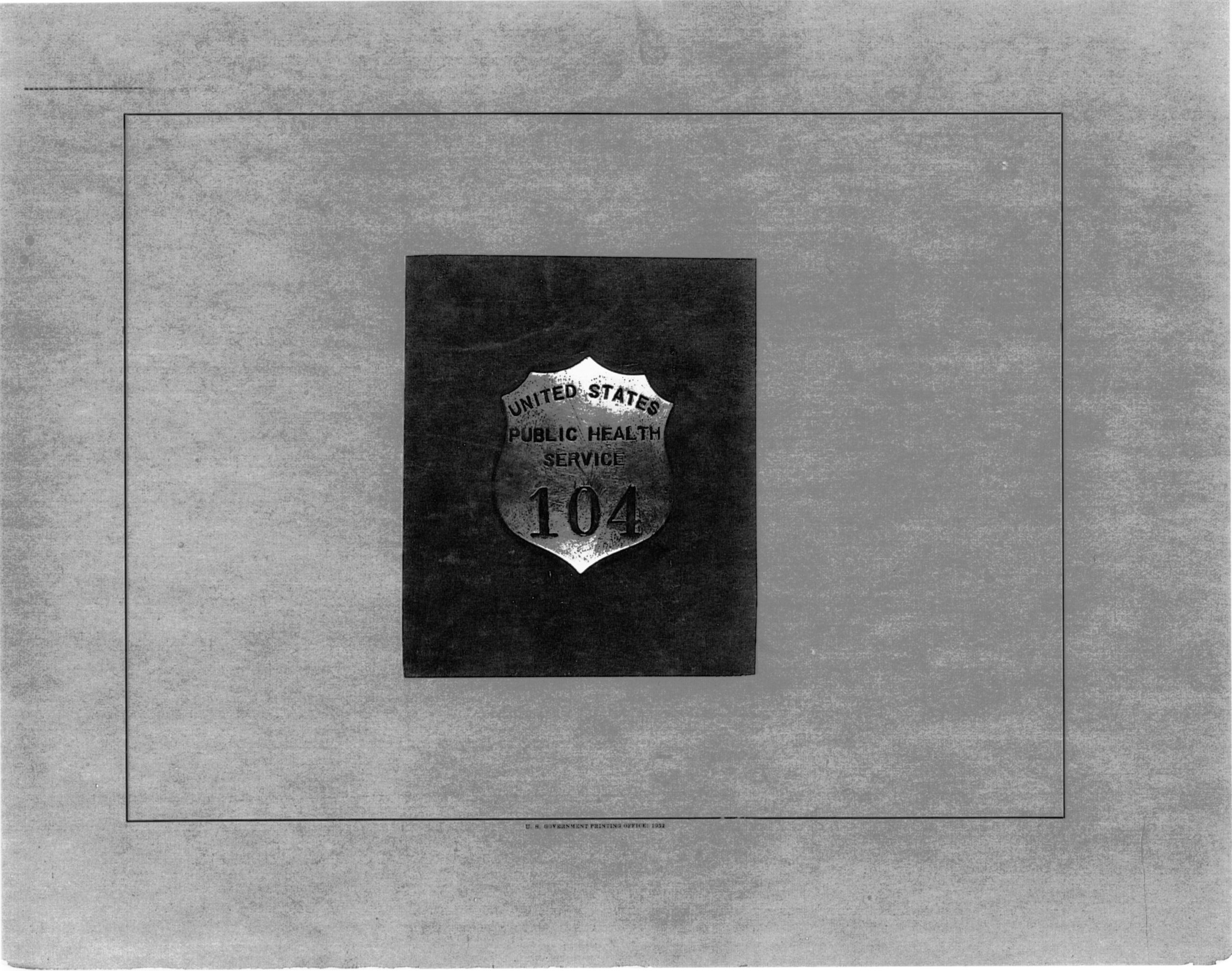
April 20, 2020
By John Mark Wilson Jr., Interpreter at Fort Miles Museum and Historical Area
Quarantine, quarantine, quarantine- it’s a word we are hearing every day now, but did you know the idea of quarantine has been around for centuries? The 14th century saw many nations quarantining the ships and crews of other countries upon entering their ports to stop the spread of disease. The city-state of Venice was one of the first; in 1484, Venetians began isolating foreign ships suspected of having plague for forty days. In fact, the English word “quarantine” comes from the Italian “quarantina,” which means “forty.”
By the 1700s, even a young nation like the United States understood the importance of quarantining and caring for sick mariners. With that in mind, in 1798 President John Adams signed the “Act for the Relief of Sick and Disabled Seamen” into law. This act established a system of marine hospitals up and down the U.S. coastline and its inland waterways. By 1801 there were marine hospitals operating in Virginia, Massachusetts, Louisiana, Rhode Island and South Carolina. As the United States annexed more territory, hospitals were built in new areas like California, the Oregon Territory, and the inland waterways of the Great Lakes.
Following the Civil War, the administration for these hospitals was reorganized by Congress into the Marine Hospital Service, officially established in 1870. This new service was under the supervision of a chief surgeon who would ultimately become known as the Surgeon General of the United States. John Maynard Woodworth, the first surgeon to lead the Marine Hospital Service, quickly organized the service under a military model, ensuring efficiency as well as assigning experienced physicians to each marine hospital.

Flag of the Marine Hospital Service. United States Public Health Service.
In 1878 major diseases such as cholera, yellow fever, and smallpox were running rampant around the world. At the same time, many immigrants were coming to the United States to flee from problems in their home countries With this in mind, Congress enacted the National Quarantine Act of 1878 with the goal of preventing infectious diseases from entering the country and spreading. The task of enforcing this act was placed upon the Marine Hospital Service. Their new duties involved controlling the spread of infectious diseases into the country by immunization, disinfection, and quarantine.
Quarantine stations were established across the country to process incoming immigrants in an effort to prevent infectious diseases entering the country. One, the Delaware Breakwater Quarantine Station, was established at Cape Henlopen in 1884. The station was tasked with processing all ships heading for the ports of Wilmington, DE and Philadelphia, PA. The station was located three miles from Lewes and connected to the town by a dirt road. The plot of land the station sat on at Cape Henlopen is not the Cape we know today. In 1884, Cape Henlopen had very few trees and little grass. The first buildings at the station were constructed under the supervision of Dr George Stoner and included a 6-bed hospital, a kitchen, a surgeon’s house, and a shed. A Lewes native by the name of Dr. William P. Orr of the Marine Hospital Service was the first to command the Delaware Breakwater Quarantine Station when it officially opened in May of 1885.

The Surgeon’s residence. Delaware State Parks Cultural Resources Unit.
The station followed a strict procedure. If a ship carrying immigrants entered the Delaware Bay, it anchored near the outer breakwater and raised a yellow flag. The station would then launch a skiff carrying the station’s doctor and some attendants to the ship. There he would inspect the passengers and crew for any signs of disease. This inspection was frustrating for the doctor and and terrifying for the immigrants as there was most always a language barrier. This often caused both the doctor and the immigrants to get upset. If no one on board was found to be ill the ship was released and it would continue on to its port. If a passenger or crew member was found to be sick, they were taken back to the station’s hospital for treatment. Once back at the hospital those removed were made to change the clothes they were wearing so the infected ones could be fumigated by a machine using hot steam and sulfur. The ship remained at anchor for two to twelve weeks, depending on the disease, to ensure no one else on board fell ill. After it was confirmed to be safe the ship was allowed to continue its journey up the bay.

One of the Delaware Breakwater Quarantine Station’s skiff used for transporting the station’s doctor and medical teams to and from ships being inspected. Delaware State Parks Cultural Resources Unit.
The 1890s saw an increase of immigrants coming to the United States. With the increase in immigrants came upgrades to the Breakwater Quarantine Station. The 6-bed hospital was expanded and became a sick ward for men while a separate ward was built for women. Other upgrades to the station included barracks for men and women, a sewer system, stables, bathhouses, a laundry building, a boathouse, a blacksmith shop, a disinfecting building, a crematorium, and a graveyard.

Immigrants being processed at the Delaware Breakwater Quarantine Station. Delaware State Parks Cultural Resources Unit
In 1912, it was apparent the duties of the Marine Hospital Service had expanded from just caring for sailors to the general public, and it was renamed the Public Health Service. World War I saw the U.S. Navy turn the Delaware Breakwater Quarantine Station into a naval base from 1917 to1918, ending the processing of immigrants at Cape Henlopen. Upon the war’s end the station was returned to the Public Health Service where it was kept at the ready as a quarantine station until 1926, when it was officially closed. The station’s buildings were all removed by 1931. All that remains of the station today is the foundation of the surgeon’s house, located near the Fishing Pier overflow lot, and some photographs. It is estimated that while the Delaware Breakwater Quarantine Station was in service it processed some 200,000 immigrants on their way to start a new life here in the United States.


Badge and logo of the Public Health Service.
Although the Delaware Breakwater Quarantine Station is gone, the Public Health Service continues its mission to care for the ill and control the spread of disease in the United States. Just as members of the Marine Hospital Service fought against cholera and smallpox during the 1800s, members of the Public Health Service are on the frontlines against Covid-19 today.


